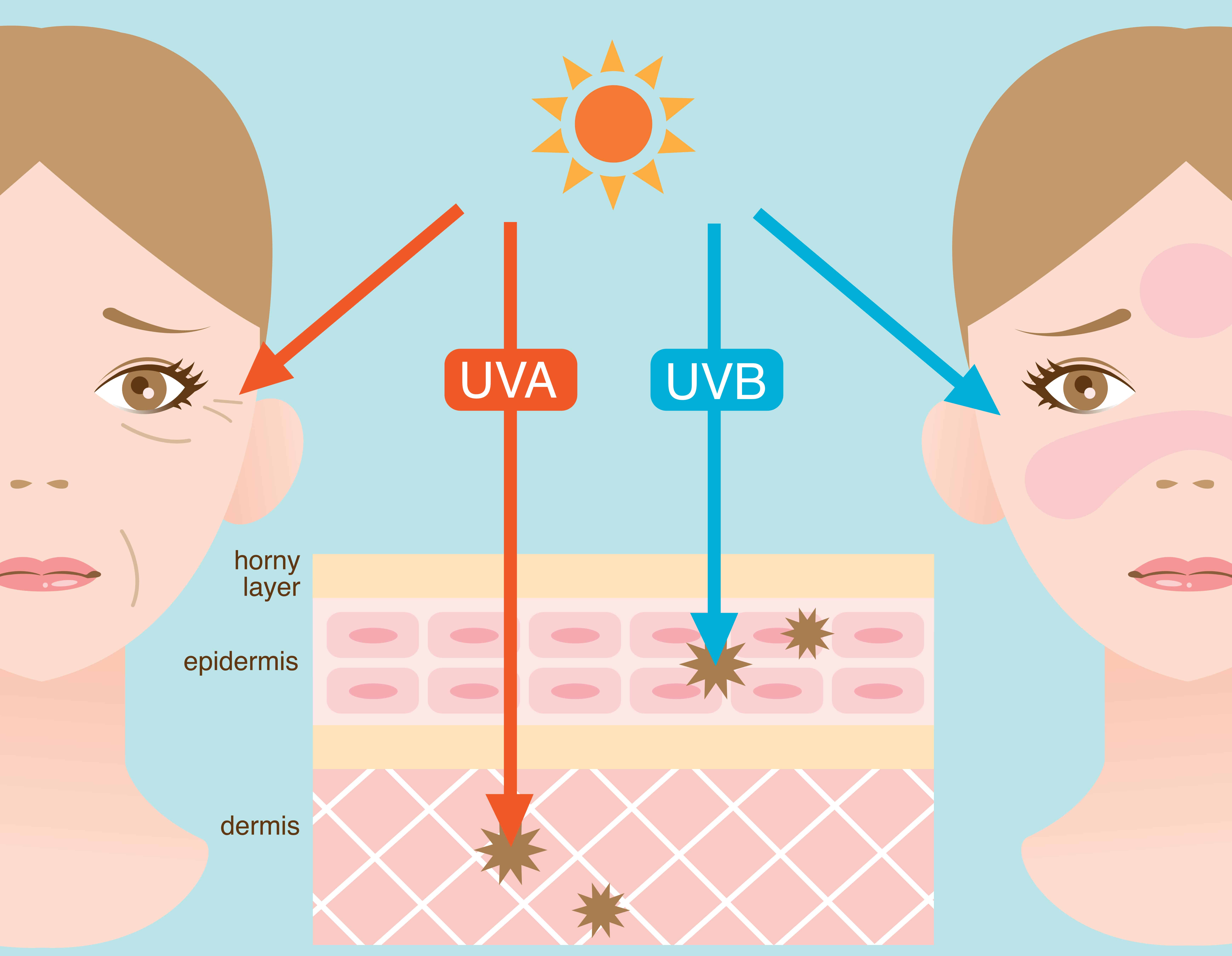In a study published in JAMA Dermatology, researchers at Northwestern University Feinberg School of Medicine discovered that even though 93% of their clinic attendee purchased a sunscreen, most people have a lack of understanding on the terminology used in a sunscreen label. Fewer than half of the participants were able to correctly identify the terminology used on the label. UVA, UVB, SPF, broad-spectrum, PA, they may all seem confusing to consumers. Are you as confused? Worried not, as this article will explain all the commonly used term on this essential product.
Is it a sunscreen or a sunblock?
Many brands today are actually a blend of sunscreen and sunblock. The words are also frequently used interchangeably. Sunscreen or sunblock help shield you from the sun’s dangerous ultraviolet rays in different ways:
- Sunscreen: Sunscreen filters or screens the sun’s ultraviolet (UV) rays. Also called chemical sunscreen, it keeps most rays out but lets some in. It is more commonly used than sunblock. It utilises a variety of chemicals that work to absorb harmful UV rays before they penetrate your skin.
- Sunblock: Sunblock or physical sunscreen reflects the sun’s rays from the skin. It blocks the rays from penetrating the skin. Most sunblocks utilise titanium oxide or zinc oxide as the active ingredient.
What is UVA and UVB rays

There are many different types of rays present in sunlight. The rays that are most damaging to our skin are called ultraviolet (UV) rays. UVB and UVA are the two basic types of ultraviolet rays that reach the earth’s surface.
UVB rays are responsible for producing sunburn. It’s easier to remember UVB cause burning. The UVB rays also play the greatest role in causing skin cancers.
UVA rays also play a role in skin cancer formation. It also penetrates more deeply into the skin and plays a greater role in premature skin aging changes including wrinkle formation. Hence, remember UVA cause aging. There are approximately 500 times more UVA rays in sunlight than UVB rays. UVA is around every day and it can penetrate through window glass and the cloud.
How much SPF do you need?
SPF stands for the sun protection factor. It measures a sunscreen’s ability to filter UVB rays. SPF of 30 means that technically, you could be out in the sun 30 times longer before you get sunburned than you would be able to if you went out without sunscreen, as long as you keep reapplying it appropriately.
An SPF of 30 is not double as effective as an SPF 15. Rather, the effectiveness in filtering UVB rays are as follows:
- SPF 15 filters about 93% of UV-B rays
- SPF 30 filters about 97% of UV-B rays
- SPF 50 filters about 98% of UV-B rays
Hence, the difference between SPF 30 and SPF 50 is only a 1% filtering improvement. If the sunscreen is reapplied every two hours and use in the right amount, using SPF 30 sunscreen is enough for typical adults.
What does broad spectrum mean
Since SPF only measures protection against UVB rays, UVA coverage is indicated by the word ‘broad spectrum’. Most active ingredients in sunscreen shield against UVB, but far fewer have UVA coverage, and only a handful offer both. A sunscreen that combines both physical and chemical sunscreen usually have a broad spectrum property.
What about PPD and PPA?
Any sunscreen that protects against both UVA and UVB rays qualifies as broad spectrum. There’s some criticism from consumer advocates that the standard allows any sunscreen that provides any measurable protection from UVA rays as broad spectrum, even if that protection is very low.
Meanwhile, around the globe, the standardized indicator for UVA protection may not be the same. Other test and labels are used unlike the universal SPF indicator for UVB protection. So many sunscreens from Europe and Asia show more specific rankings for UVA protection and can be seen on their label as:
- PPD (Persistent Pigment Darkening): Used in Asia and Europe, a PPD of 10 means that it’ll take around 10 times longer for your skin to tan, compared to if it was unprotected.
- PA (Protection Grade of UVA): used in Asian countries like Japan and South Korea, the PA system simplifies and groups the ratings from a PPD test. It ranges from PA+ to PA+++
Source: Article contributed by hellodoktor.com.









